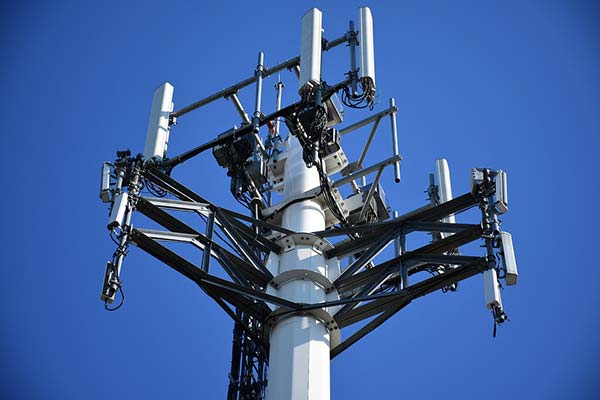Many people have 5G internet connections in their home, and phones are built to prefer 5G networks over 4G options. Why? 5G is a huge deal, and the technology industry is proud of its latest accomplishment.
But it comes into question whether this excitement is just a one-time hype that will slowly die out or if it’s worth all the buzz. Decide for yourself.
Article Chapters
A Giant Leap Forward
Immediately you might have noticed that 5G networks are incredibly fast. These networks are outperforming 4G options by approximately ten times over. A 5G network can achieve record download speeds of 4gb per second.
Not only do they far outpace 4G networks by approximately ten times over, but in some areas, it outperforms recent internet options by 100 times over in speed.
Currently, 4G and home networks typically have download speeds ranging between 4 and 12 mbps. Testing your speed regularly can help you identify where your fitting into this range.
Download a full movie in less than a minute, watch videos online with zero buffering and play games without loading. It’s all possible because of 5G, and the leap is so significant it seems impossible.
In the past, internet users went from dial-up to high speed, to DSL, to fiber optics, to 4G and each increment was only a bit faster than the prior technology. 5G’s performance difference compared to 4G, is somewhere in the realm of comparing fiber optics to dial-up.
While the tech community was building hype about the 5G speed difference before it was released, it seemed like something too good to be true. Now we know that’s not the case.
Quality of Service and Speed
There are two major industries impacted by 5G. The content and communications industries. While Verizon, AT&T, Sprint and T-Mobile all offer 5G service now they’re simply the bridge or the access point.
Once you get past the communications companies, you get to the content. Webpages load faster, videos stream faster and more seamlessly, because of 5G. The use of 5G networks can help resolve issues with both bandwidth and handling high a high volume of requests from numerous devices. Now, 5G does have limitations. It has data speed restrictions, and it has to perform within the confines of hardware and adjacent technology such as bandwidth.
How can users tell the difference even when using old hardware or systems? 5G essentially makes the data being transferred more efficient and compact. The infrastructure of the data is different, and thus, it transfers differently.
Content companies such as YouTube, Netflix, and even small blogs can run more content on their sites knowing that 5G users won’t have a problem with speed.
5G is paving the way to improved service, higher quality video formats, and fewer interruptions in service or content.


Advertising Improved and Seamless
Until recently, advertisers would only put small amounts of their marketing budget into advertising online. Because Facebook, YouTube, and Google make it fairly inexpensive to advertise most companies have a “take what you get” approach to mobile ad-based marketing.
5G is changing that as advertisers are now able to run seamless ads that tie directly with their operators. Mobile formatted ads make ads less aggravating on users, more responsive to mobile design, and faster interaction response in the mobile environment.
As marketers are starting to care about their mobile ads and building environments specifically for mobile ads, you’ll see better campaigns. Get ready to say goodbye to pop-up ads and opt-in requests every time you jump onto a site. With 5G marketers can implement new experiences for mobile shoppers.
Marketers can take advantage of higher network speeds to enhance video play and personalize the ad experience. Advertisers will be able to see higher conversion rates when they adopt any campaign for an exclusively mobile experience.
Efficiency & Utilisation
The ultimate goal of 5G services is to decrease business expenses and drive revenue through the presence of a greater resource. Is this possible? For users, you might see the tradeoff of seamless advertising for speed as a fair deal. For business owners, 5G is a step into the future.
Technology with 5G access is more efficient in data handling and in energy consumption. 5G is also more reliable meaning fewer interruptions or data barriers, and it promotes low latency communications. Working with 5G technology is vital for any business that operates online in any way.
Even if you’re only working with a cloud for storage or allowing employees to telecommute 5G can change the strain on your other resources. Similar to past advancements in network speeds, 5G is faster and more efficient because of using multiple frequencies to impact bandwidth.
When it comes to utilization of 5G, it comes down to infrastructure. Overhauling the communications system, 5G offers advanced communication technologies specifically with machine to machine communications.
For companies that are exploring the opportunities of driverless vehicles, mobile app hosting, edge computing, or even data center based business models, 5G provides a vital function.
The ability to provide advanced functionality of machine-to-machine communications will continue to promote the Internet of Things. Wireless communication from one machine to another would not have been possible on the prior communications system. It’s made possible now through clear compartmentalizing, which is how 5G is so efficient — allowing these communications to take place without impeding on the other uses such as streaming, remote access or even web browsing.
5G is the first network that caters towards communications goals and businesses rather than consumers. While end-users clearly benefit from the speed, the advancements from this technology make it something that is very different from anything we’ve seen in the past.
Author Bio
Emily Jacobs is Happiness Ambassador for SpeedCheck.org. She loves to write latest technology trends and love to share her knowledge through her articles.

